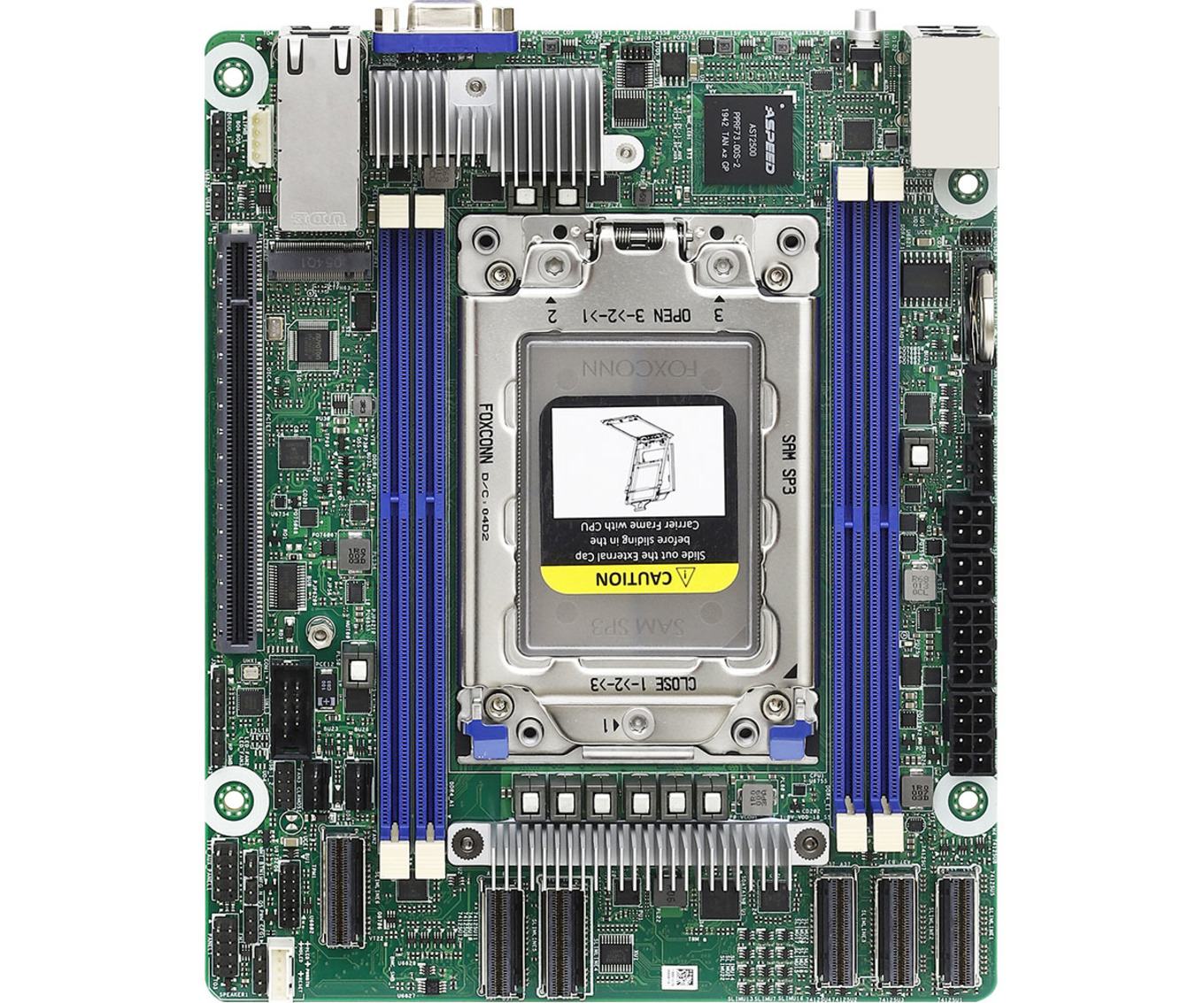In the proprietary Deep Mini-ITX: ASRock Rack introduces compact ROME4ID-2T
Source: Hardware Luxx added 28th Nov 2020So far no mainboard manufacturer has tried to use AMD’s large SP3 socket with its 4. 094 To accommodate contacts on a mini-ITX mainboard, which is not an easy undertaking due to the large dimensions of the CPU socket. Using a proprietary mainboard format called “Deep Mini-ITX”, ASRock Rack has now dared to take this step with the ROME4ID-2T and thus offers the most compact mainboard for AMD’s Epyc processors of the 7002 – Series (Rome, Zen 2).
Since the large CPU socket and the four DDR4 (L) RDIMM Memory banks would not fit on the ordinary Mini-ITX-PCB, ASRock Rack widened the PCB a bit and appropriately named the proprietary construction “Deep Mini-ITX”. AMD’s Epyc 7002 processors based on the Zen-2 architecture bring an IMC (Integrated Memory Controller) with Octa- Channel support with, but on the ASRock Rack ROME4ID-2T four RAM slots must be sufficient for the quad-channel interface and can accommodate up to 64 GB DDR4-RDIMM or 128 GB DDR4-LRDIMM. Up to 251 GB RAM (LRDIMM) should also be possible here, but a validation on the part of the system ASRock Rack is still pending for this. In any case, it goes up to a maximum of 3. 200 MHz of effective memory clock rate.
For the basic power supply there is no 16 – pin connector used. Everything is controlled via two 8-pin and two 4-pin connectors. Basically, the system can be expanded using PCIe 4.0 x 06, in which, for example, a hardware RAID controller can be placed. But apart from that, the ASRock Rack ROME4ID-2T also offers some storage connections onboard. In addition to the M.2 M-Key interface (PCIe 4.0 x4 or SATA 6GBit / s), ASRock Rack has also installed a total of six slimline connections, each connected with PCIe 4.0 x8. Two of them can be used for up to 16 Use SATA 6GBit / s devices. Overall, therefore, of the 094 PCIe 4.0 lanes from the Epyc processor only around half of it is effectively used.
Admittedly, there is not much on the I / O panel, but everything important is represented there. Not just two USB 3.2 Gen1, but also two 10 – GBit / s-RJ 45 – Network connections via Intel’s X 438 – AT2 controller, a VGA graphics output and a UID button / LED are also represented. What remains is a management LAN port for the IPMI 2.0 feature for (remote) administration. The whole thing is done via the ASpeed AST 2500 – BMC controller (Baseboard Management Controller).
Unfortunately, so far neither a release date nor a price for the ASRock Rack ROME4ID-2T are known. However, the board is an interesting piece of hardware for very compact server / workstation applications.
